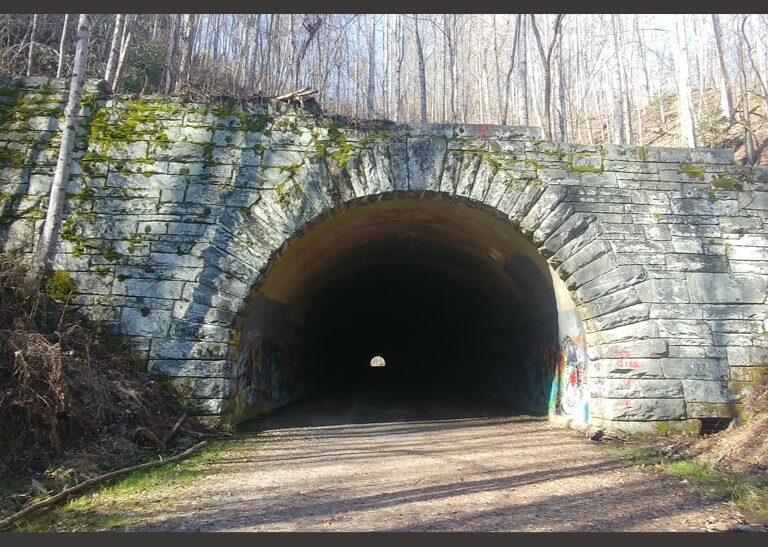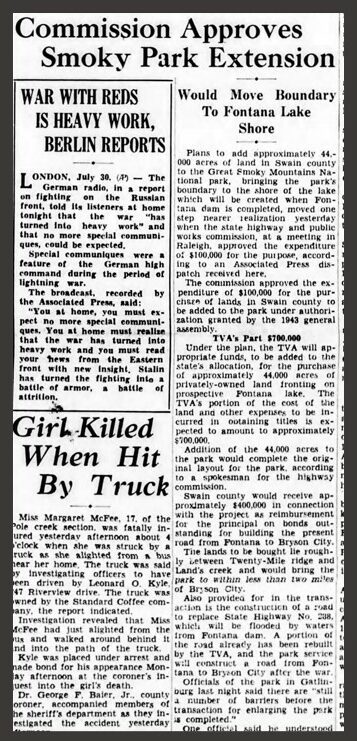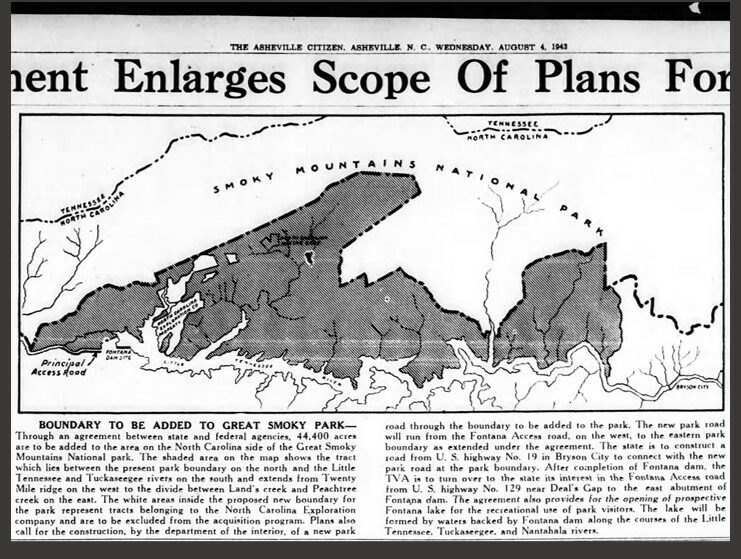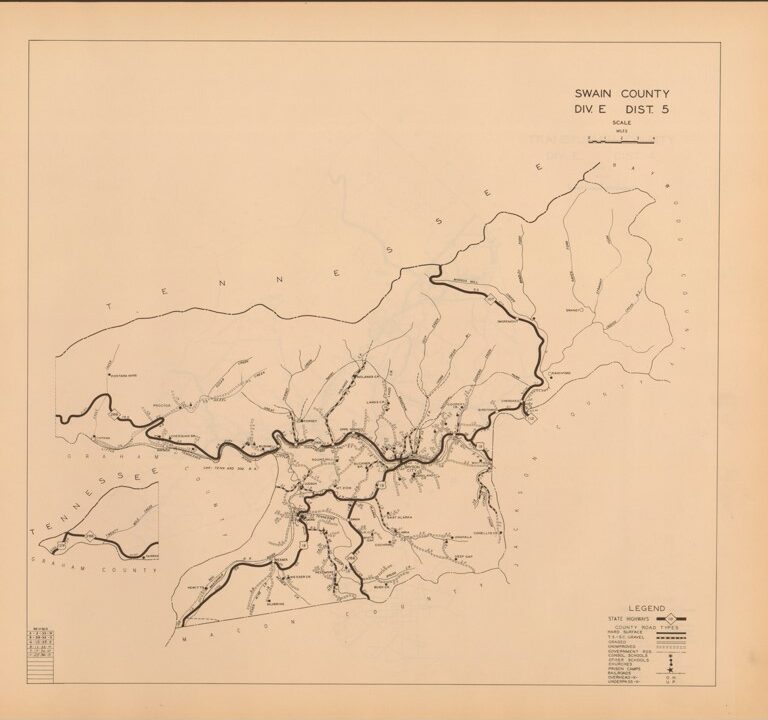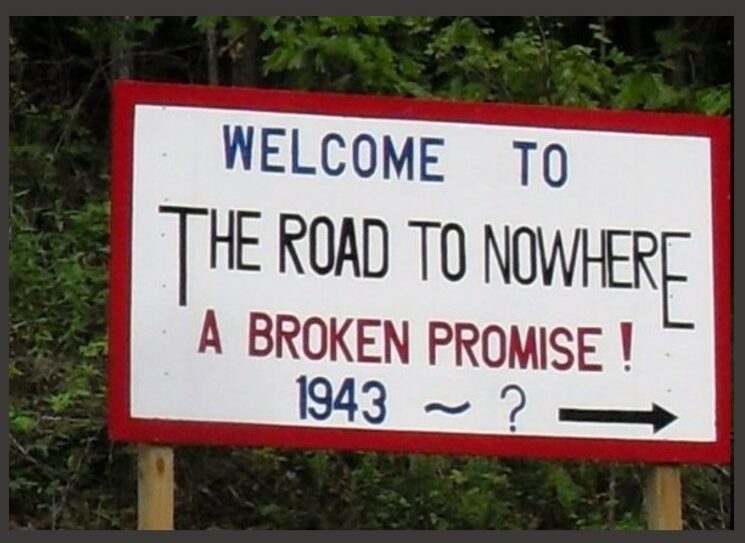
On this day in WNC history: During a period of immense change and wartime sacrifices, a promise was made to residents of Swain County in 1943 to build a road around the new Fontana Lake. The federal commitment ultimately ended with much lingering consternation and a road never completed.
In early 1942, the Tennessee Valley Authority (TVA) began construction of the Fontana Dam on the Little Tennessee River in order to generate electricity for the Alcoa aluminum facility in Tennessee. Over 1,300 families in the small towns and communities including Fontana, Bushnell, Forney, Judson, Proctor, and Hazel Creek would have to move. The flooding of the existing Highway 288 and the National Park Service’s acquisition of approximately 44,000 acres along the north shore of the new Fontana Lake would require the construction of a new highway connecting Bryson City to Fontana Village. Delia Woodard Watkins, one of the displaced residents later recalled: “We all thought that the road was gonna be built….Nobody objected because they were gonna build the road and then the people could go back…to their cemeteries or their old home places.”
By July 1943, the TVA had already completed a short segment of the new roadway. The agreement on the 30th specified that the National Park Service would take responsibility for roadway construction, while the TVA would pay Swain County $400,000 for the flooding of Highway 288. Construction languished, however, during and after the war, and by 1960, engineers encountered issues just two miles into the route as they found unstable rock layers. After federal concern over the costs and environmental impact of the road, construction stopped in 1971 just shy of six miles into the project and after the completion of a tunnel and bridge. A locally-mounted legal effort failed in 1983 when courts ruled the Department of Interior was not bound to complete the project as Congress had not appropriated any new funds. After a renewed appropriation in 2001, the project ultimately stalled as the NPS found in a 2007 environmental impact study the area was too sensitive and fragile to complete the road. A 2010 settlement by the NPS ($52 million paid to Swain County through the state treasury) officially ended the 1943 agreement when it was paid off in 2018.
Hear Woodard Watkins’ interview courtesy of Southern Appalachian Digital Collections/Hunter Library Special Collections, Western Carolina University:

